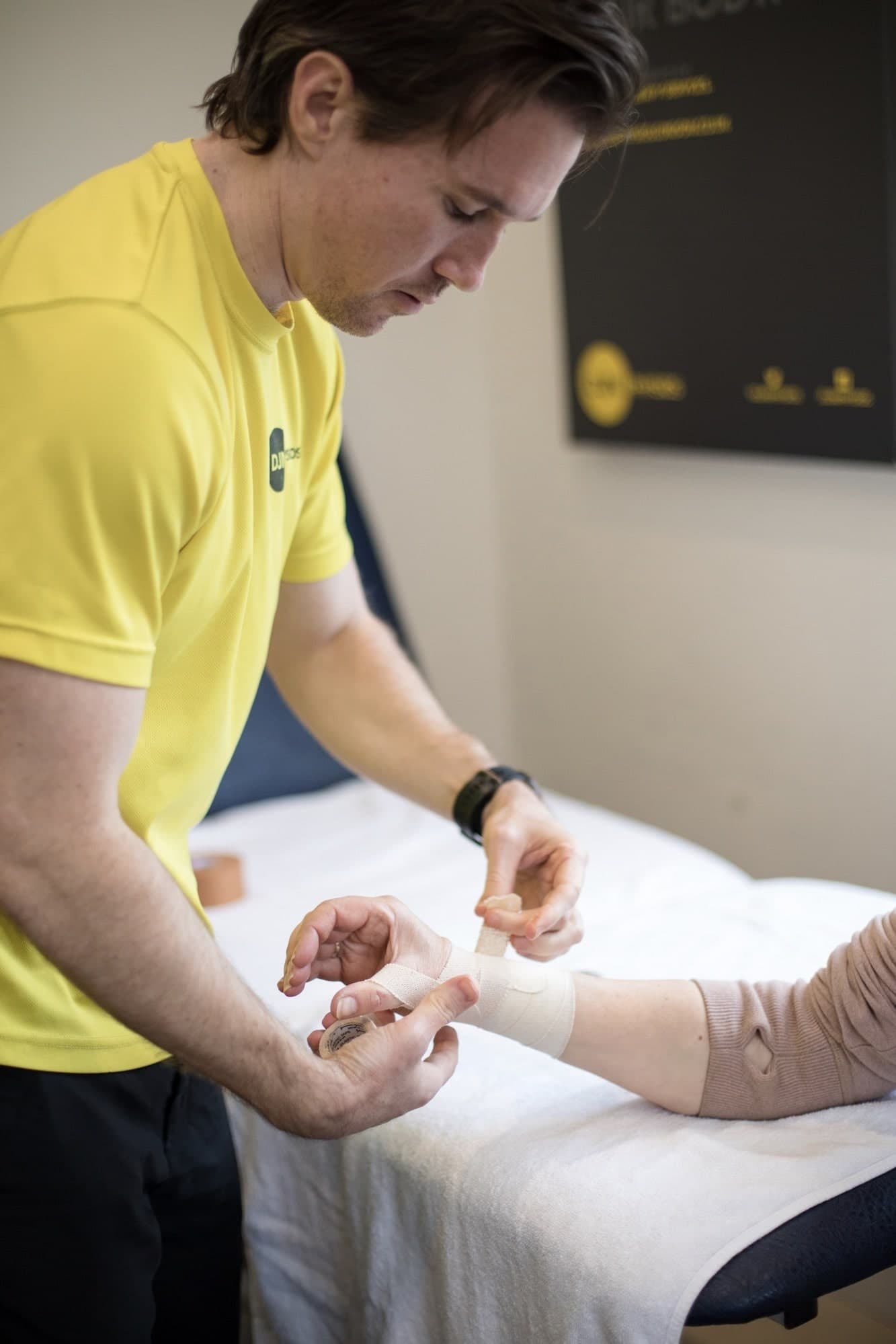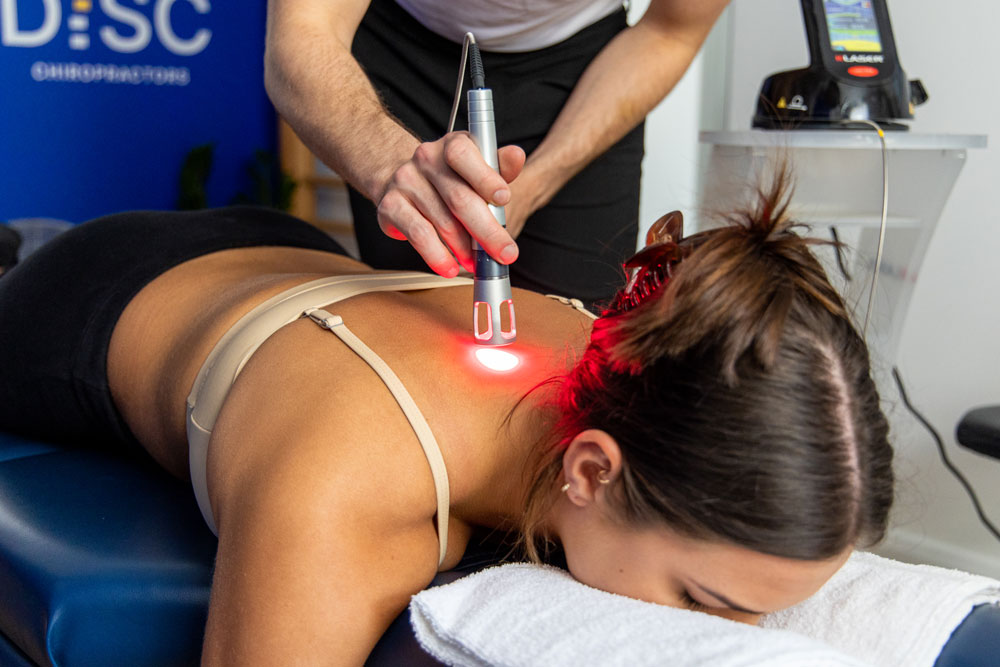Wrist & Hand Pain
Book NowCommon conditions affecting the Wrist & Hands include:
- Carpal tunnel syndrome
- Trapped nerves
- Ligament sprains
- Tendinopathies
- Arthritis
- Fractures
Your wrist is made up of 8 bones arranged in two rows of four creating the carpal tunnel, and when talking about wrist and hand dysfunction, carpal tunnel syndrome is the headline act, but in truth everyone has a carpal tunnel on each arm.

The dysfunction or syndrome only occurs when the size or shape of the tunnel is affected creating swelling or inflammation on the nerves and tendons that pass through; this usually occurs via damage to the ligaments and is often a result of repetitive strains or trauma creating an instability.

ANATOMY
The carpal tunnel is a narrow passageway in the wrist, about an inch wide. The floor and sides of the tunnel are formed by small wrist bones called carpal bones, while a strong band of connective tissue called the transverse carpal ligament forms the roof. Because these boundaries are very rigid, the carpal tunnel has little capacity to stretch or increase in size.
The median nerve is one of the main nerves in the hand, originating as a group of nerve roots in the neck, which come together to form a single nerve in the arm. It travels down the upper arm, across the elbow, and into the forearm, then passes through the carpal tunnel at the wrist on its way to the hand and fingers, separating into several smaller nerves along the way, particularly once it reaches the palm. These nerves allow for feeling in the thumb, index finger, middle finger, and half of the ring finger (the thumb side). The median nerve also controls the muscles around the base of the thumb.
Accompanying the median nerve are nine tendons that bend the fingers and thumb, called flexor tendons. These tendons travel through the carpal tunnel as well, providing the muscles necessary to move the fingers and thumb in a flexed position.
Obviously, the headline grabbing carpal tunnel syndrome is not the only game in town, the ulnar and radial nerves travel down the forearm either side of the median nerve but crucially do not pass through the carpal tunnel.
The ulnar nerve supplies the “pinkie” finger, and the radial nerve covers most of the back of the thumb and hand; altered function within the joint and muscles can still irritate these nerves a create wrist and hand pain.
Therefore, the key to understanding which nerve the culprit is, is often achieved by analysing the area in which pain is felt and the corresponding muscles that are weakened. However, just to complicate the scenario, even when pain is only located in the hand the irritation to the nerve could have occurred anywhere along its length. For example, DISC injuries in the neck are capable of only being felt in the wrist and are capable of wreaking havoc on the muscular firing patterns of the forearm. Likewise, the elbow is a common area in which dysfunction is created pain referred further downstream.
The soft tissues of the hand are particularly susceptible to traumas both large and small which can build into a long-term issue. Muscles, joints, tendons, and ligaments are all capable of becoming inflamed if significantly disturbed or misused.

DISC TREATMENT PROTOCOL
The first step in treating any condition is to find the underlying cause, often the pain experienced by a patient is the last “domino” to fall in a cascade of reactions. A thorough examination at our DISC Clinic in Surbiton will help not only identify exactly what is generating the pain but aim to understand its root cause.
Once a diagnosis is determined, treatment options to address the issue can be explored. Pain relief, corrective measures, and preventative strategies can be implemented to ensure the problem does not return in the future.



The first steps towards gaining pain relief often come by mobilising the soft tissues and joints in the area; this is achieved by using a combination of manual mobilising chiropractic techniques with our unique blend of Instrument Assisted Adjusting tools which can be used to gently initiate movement and blood flow (healing) in stubborn or inflamed tissue when stronger techniques may be contraindicated.
Spinal Decompression Therapy is one of the powerhouse treatments available at The DISC Chiropractors, its traction technology provides a unique ability to heal disc injuries and to un-trap the nerves that are often at fault for issues further down the chain for example in the arms and legs.
When conditions struggle to heal, Laser Therapy is an extremely safe and effective method of advancing rates of recovery. It’s warm photon light energy stimulates mitochondrial activity to enhance recovery in each and every cell of the body. Laser Therapy is especially useful in cases of inflammation, such as arthritic and repetitive strain conditions.
A major part of how our treatment protocols work is to ensure whilst the pain is coming under control, we are filling the patient with the knowledge of how to keep and maintain their results using corrective measures and rehabilitation tools to enhance their outcomes
Contact Us
If you would like to find out what we could do to help your Wrist Hand Pain, please click the icon below to book a thorough consultation to evaluate your case.
